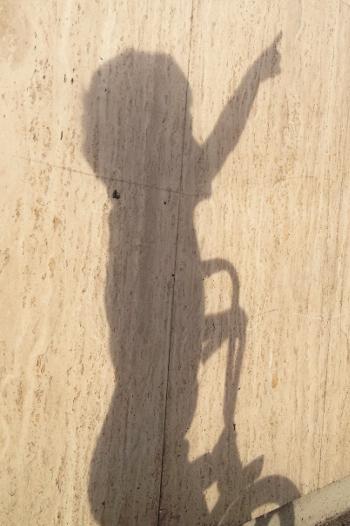Me and my shadow
Duration/age

There are shadows all around us - some are inside and some are outside.
On a sunny day show your child their shadow on the ground.
What happens to the shadow when you move? Can you run away from your shadow? How do you know it is your shadow?
Talk with your child about how shadows are formed. Does the shadow change with the sky? Take your child outside at night or when it is cloudy and talk about the differences.
Draw around your child’s shadow with a piece of chalk. Come back throughout the day and keep drawing around the shadow. Watch how it moves.
Your shadow has changed since this morning. I wonder why?
You can also measure the length of the shadow each time you come back.
When is your shadow the longest? When is it the shortest? Which is bigger - you or your shadow?
Experiment with making shapes with your bodies - do your shadows change?
How does your shadow look when you put your arms up high? Can you make your shadow wider?
Materials you will need
- Tape measure
- Chalk
Skills this activity improves
Why does this matter?
When your child is playing with their shadow they will be learning about observation and measurement. They will discover that shadows change and that they can record the changes by drawing them or measuring them.
By experimenting with their shadow your child will be beginning to understand cause and effect.
They will also be learning new words relating to shadows.
What does this lead to?
Observing and measuring are important mathematical skills that are used in everyday life. Lots of opportunities to observe and to measure, especially through play, help children to develop these skills.
Experimenting and understanding cause and effect is part of developing scientific thinking.
A wide vocabulary helps children when they are learning to read and to communicate with the other people in their life.
Language to use
- Shadow, dark, light
- Body, arms, legs, head
- Big, small, long, short
- Sun, shade, cloud
- Wide, narrow
- Straight, curved
Questions to use
- How long can you make your shadow?
Useful tips
- You might also like to take a look at the Shadow play activity.
- Remember to talk to your child in your home language.
More ideas
Find some other shadows outside. Does everything have a shadow? Do all shadows move?
Variation by age
Three to five year olds
- Try shadow drawing. Put small upright objects onto sheets of paper outside in the sun and draw around the shadows.
- Make some coloured shadows. Put coloured water into small plastic bottles or cups and put them outside on a sunny day. What do the shadows look like?
Questions to ask
- Does your drawing of the shadow look like the object? How is it different?
- Why does this make coloured shadows?
Language to use
- Shadow, silhouette, shape
- See-through, clear, transparent
- Frosted, translucent
- Solid, opaque


